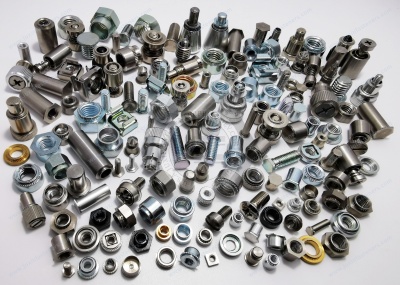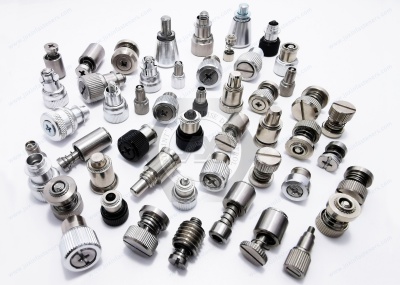Call Us
+86 136 6007 9809
Call Us
+86 136 6007 9809
Jun. 22, 2024
How do the self-clinching fasteners Work?
Fasteners designed for machine structural engineers by engineers.
Self-clinching fasteners require two features to adequately secure themselves to a metal panel—an undercut and displacers that move material into the undercut. The installation of the fastener drives this displacement. Take a clinch nut (or press nut), for example. It uses knurls as displacers, while the ramped shank creates an undercut and serves as a pilot within a panel hole.
The knurls are the first feature to touch the panel's outer surface during installation. They must move material out of the way for the barrel to sit entirely on the panel. The material is guided into the undercut using the proper installation equipment and force. Post-installation, the shank will have to displace the material again to fall out of the panel, which requires troops similar to those associated with installation.
The specific self-clinching features often change based on the fastener type. While the clinch nut uses knurls as displacers and a ramped shank as an undercut, many standoffs use the head as a displacer and a square undercut where the barrel meets the head. Some more oversized studs use large, coarse ribs to fill a trapezoidal undercut since there is more material to move, favoring energy-efficient displacement.
Advantages & Limitations
Self-clinching technology is a secure and robust fastening solution for various metals and sheet thicknesses. It minimizes loose parts like nuts and washers that otherwise would be necessary to complete a fastened joint, and installation is fast and consistent when using the proper equipment and procedure. Most cost savings come from reduced time and energy spent in production at scale with improved quality and consistency.


The most significant limitation of self-clinching fasteners is the cost associated with the installation equipment and more expensive parts. While there is a wide variety of applications in which self-clinching is a valuable solution, more time is spent developing the features required for materials of different hardness and flexibility, sheets of various thicknesses, and corrosive environments. Given the production volume needed to offset the investment in installation equipment, this can limit the versatility of self-clinching parts.
Self-clinching requires ductile metals to function properly – a material commonly sees welding as a valid solution to putting threads in a panel. The equipment is more straightforward, the parts are more superficial and typically cheaper, and innovations in laser welding have greatly improved the quality in dimensionally smaller applications. Nonetheless, energy usage is more significant, and additional time is required for welded joints to cool. Weld spatter can also cause quality problems that jeopardize an assembly if not caught during production. Where welding requires similar metals to function correctly, self-clinching can work with various dissimilar metals.
Common Applications
While self-clinching is limited to metal applications, it allows the use of corrosion-resistant coatings that remain intact upon installation. This is useful for marine environments with temperature and humidity concerns. Mass production of automotive, telecom, medical, and consumer electronics parts can benefit from using self-clinching fasteners over alternative attachment technologies, especially as innovations in conductive fasteners continue to grow.
For high-quality Self-clinching fasteners and Captivated screws Panel Fastener and professional technical support, don't hesitate to co don't us at adelajonly@gmail.com or visit our website at [Juxin Fasteners]: https://www.juxinfasteners.com.
Contact Us
Tel.:
+86 020 8621 0320
+86 020 3121 6067
Technical Support:
Navigation
SEND INQUIREY